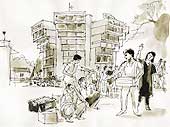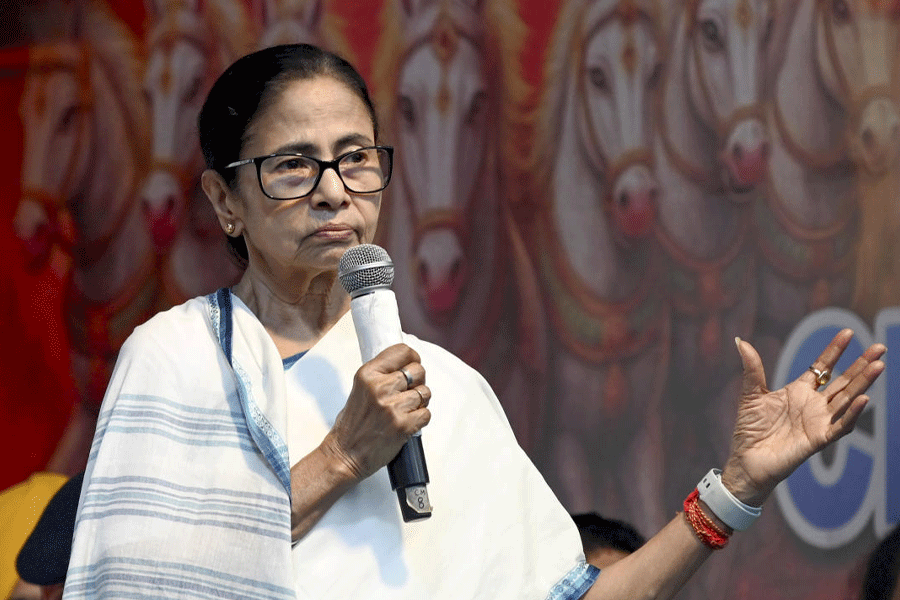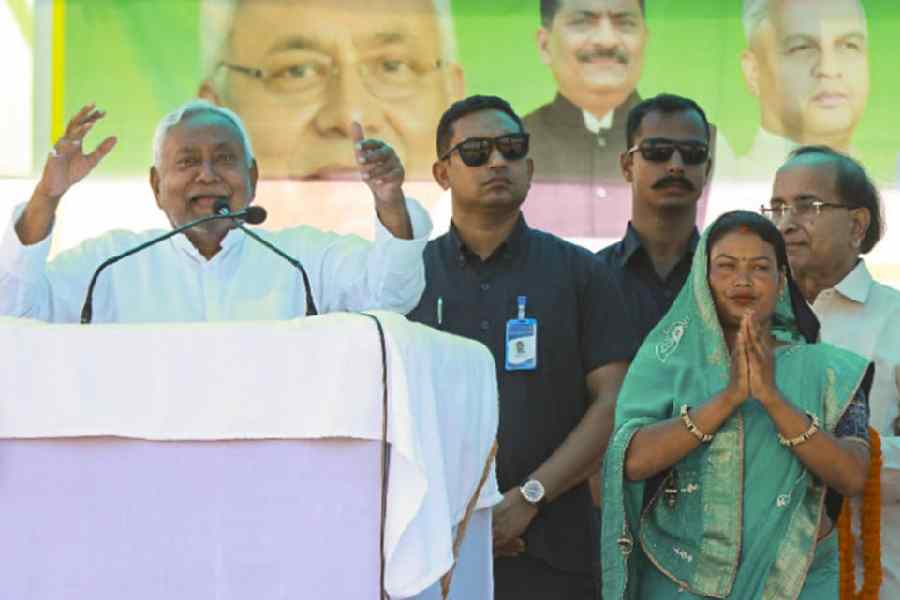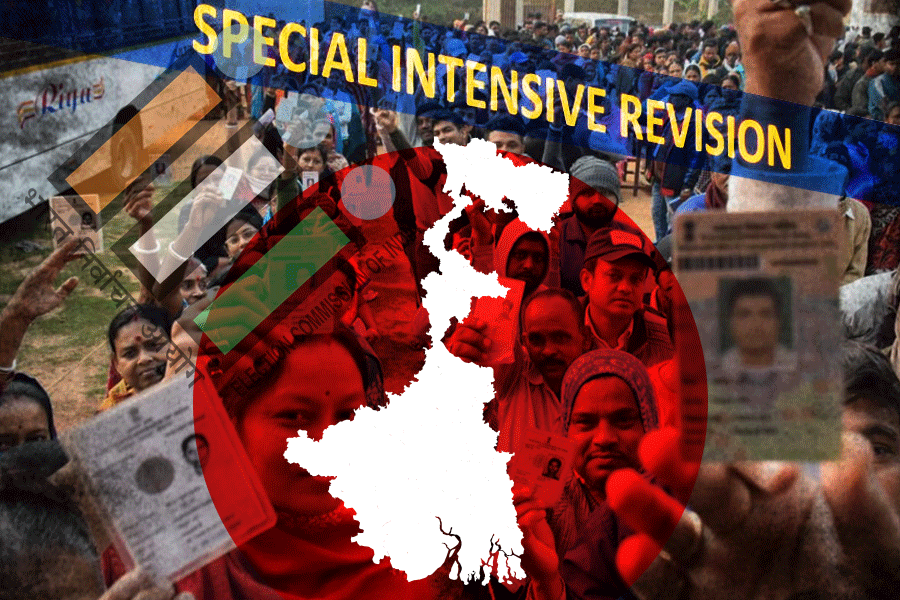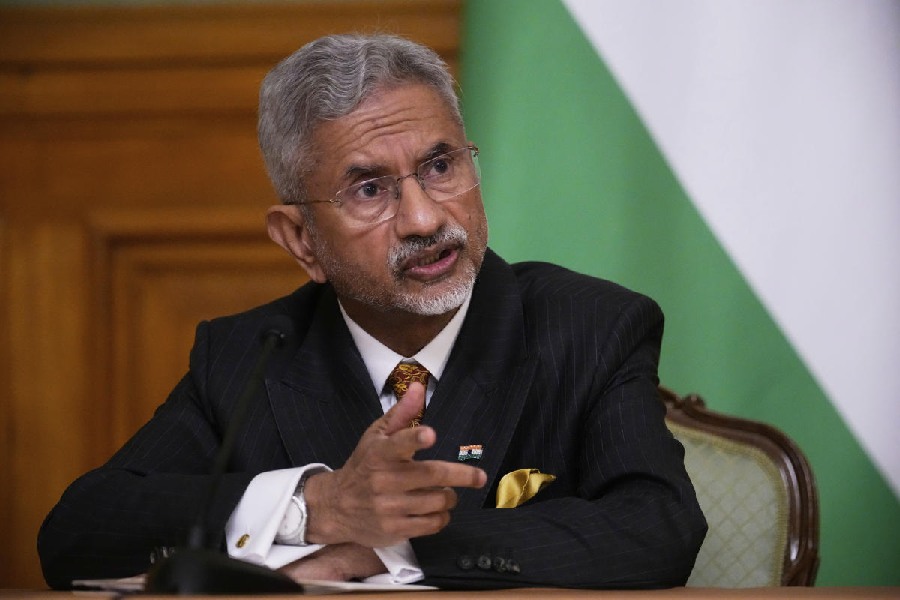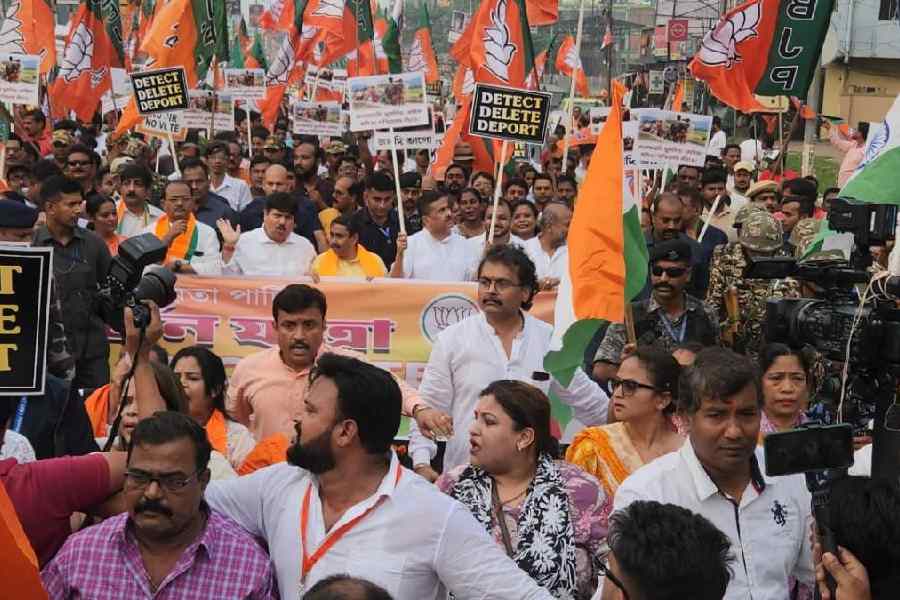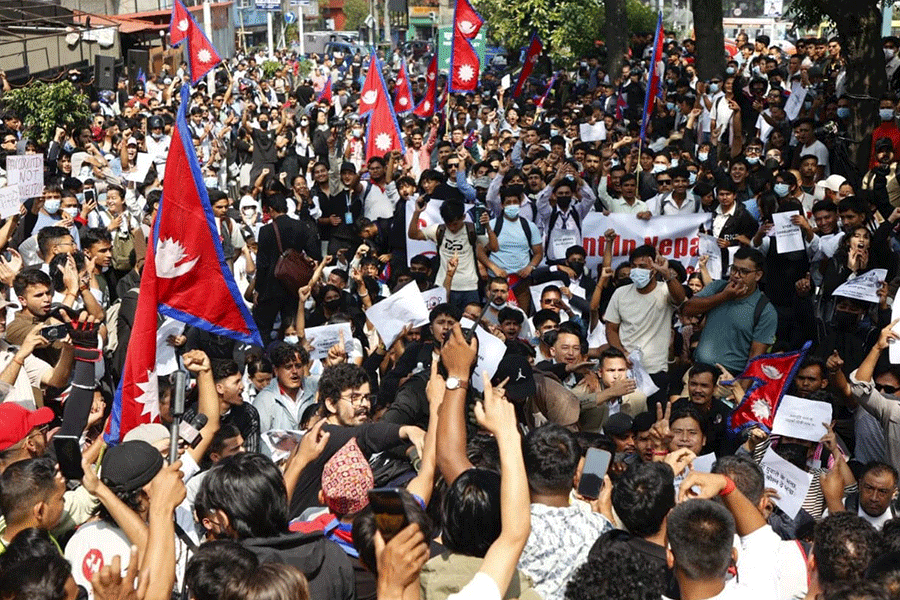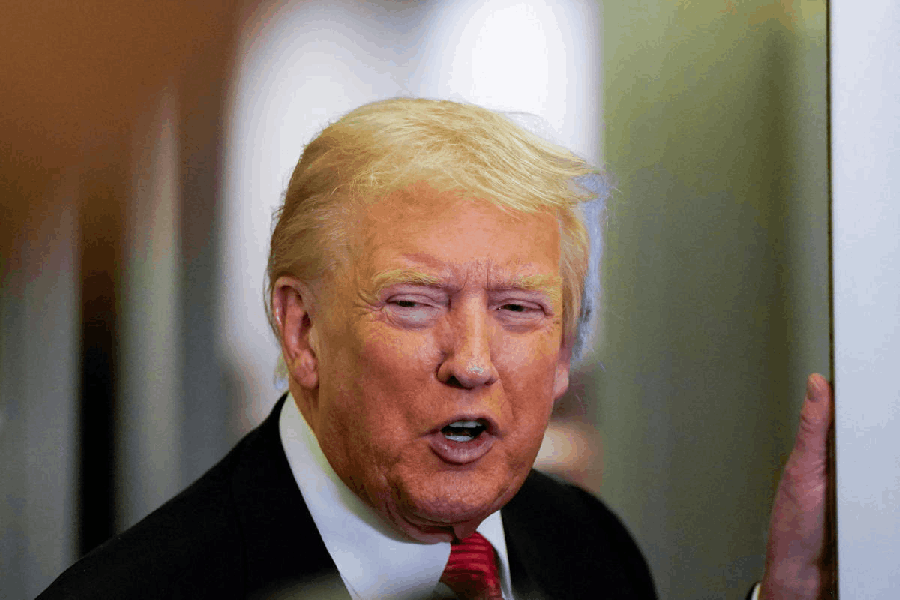 |
You need guts of steel and cotton wool for brain — and possibly a pair of dark glasses with a white cane as props — to cross a chaos called Mandi House. It’s a roundabout in the centre of New Delhi, cut off by hungry cars that circle it endlessly like sharks in the sea.
But like the poor chicken who crossed the road because it wanted to get to the other side, you swallow hard and recklessly pirouette your way to the central vista. There is reason for you to do so, for the Mandi House roundabout — always chock-a-block with action — is the spot where electoral campaigns are now being honed.
In the best of times, Mandi House is an intangible mix of the real and the unreal. These days, it’s more surreal than ever before, as drum beats clash with the cacophony of a city, and actors wend their way between spring flowers and office-goers eating paranthas with pickle, mouthing lines that bring passers-by to a surprised halt.
The actors are groups of scruffy, young boys who have been hired by an event management group for Mulayam Singh Yadav’s Samajwadi Party. Six or seven groups, each with a dholak and a prompter, control little spots in the park.
These are all wannabe-Mumbai stars, rehearsing a street play on the lawns of Mandi House. Gaurav Jha is the head of one such group of actors, some of them sitting in a semi-circle while the others form its core. Jha beats his dholak after every spoken line to add an element of drama to a bald script. There is, clearly, not much of a plot there. Mayawati is derided, Sonia Gandhi sneered at and, in line with the Samajwadi Party’s ambivalent attitude towards the BJP, Atal Bihari Vajpayee mildly reprimanded. Once in a while, the boys muck up their lines, and Jha loses his cool. “I thought you said you had all learnt your parts,” he yells at a hapless, unshaven boy who has just missed his cue.
Jha and his group have signed a contract with the event managers. They get a tidy sum (“It differs from person to person — some get Rs 5,000, some Rs 10,000,” he says) for their roles in the street-play. From next week, the groups move into different parts of Uttar Pradesh. At street corners, they hope to dazzle would-be voters with a parody of a song that they are now busy chanting: “Oo Oo Oo, you are my Sonia.”
Mandi House is the rehearsal ground, for this is the city’s cultural centre. It would be a nondescript roundabout in central Delhi but for the fact that it is surrounded by institutions that spell Culture. The National School of Drama (NSD) is right there, as is the Lalit Kala Akademi. The Sangeet Natak Akademi is there as well, while just on the other side of the road is the Shri Ram Centre, next to Stein’s Triveni. Several theatre halls are on Mandi House, starting right from Kamani to FICCI’s huge auditorium.
Delhi’s young have booked spots for themselves in the city. Those with warm wallets and magic-wielding credit cards hang out at Ansal Plaza. For those who are hungry and in search of a break, Mandi House is the place to haunt.
Though it’s unlikely that an authoritative study has been done on the subject, it is believed that the density of kurta-clad, cloth-bag-toting men and women per square metre of Mandi House is far higher than that in any other part of India, including the once famous coffee house of Calcutta.
The crowd consists of men — and a few women — who come to Delhi with stars in their eyes. Mandi House leads you to bitsy roles in docu-advertisements for DAVP (Directorate of Audio Visual Publicity) and other government wings. Those who are lucky find a place in television serials. And for some — made for better things — Mandi House is indeed the stop-over to Mumbai.
One of the abiding attractions of Mandi House is the fact that many of the angry young men and women who once hung around the NSD have done well for themselves. The Eighties’ generation goes misty-eyed about Naseeruddin Shah and Om Puri. People of the Nineties speak fondly of Ashish Vidyarthi. And the new millennium lot lovingly refers to Manoj Bajpai. “This is where he sat for hours and drank tea,” a young Mandi House regular will whisper to another, pointing reverentially to a spot under a wizened tree.
Yet, old-timers stress, Mandi House is not what it used to be. .K. Sharma, who heads the theatre group Act-One, remembers the days when he and his friends haunted Mandi House, way back in the Seventies and Eighties. “The timber of debate was different those days,” he recalls. “We would discuss anything — from the latest innovation in theatre to a new film or the works of someone making waves in literature,” he says.
It is still the stuff dreams are made of but somewhere along the line, things have changed. Today, the young men and women who gather at Mandi House have similar hopes of making it big, but, Sharma believes, have lost the fire that set apart culture-zealots from the more humdrum lot. “These days, the discussions centre on who’s got what, and who hasn’t,” he says. “Cinema, art, theatre, literature — nothing gets talked of anymore. Everybody would rather discuss serials and people who have got breaks.”
Yet, it’s possibly the only spot in the city where cultural quest meets political angst. This is where the Safdar Hashmi Memorial Trust holds its annual cultural concert on January 1. And it was at the JNU complex in Mandi House where the Aman Ekta Manch organized a massive get-together to mark 10 years of the demolition of the Babri Masjid.
Not surprisingly, Mulayam’s boys have found their place under the sun at Mandi House. “The place is free and we are free to do what we want to do,” says a manager of another group.
But freedom, as the poet sang, is just another word for nothing left to lose. And in Mandi House, as some reach the stars and most mingle with the dust, despair keeps merging with hope.

